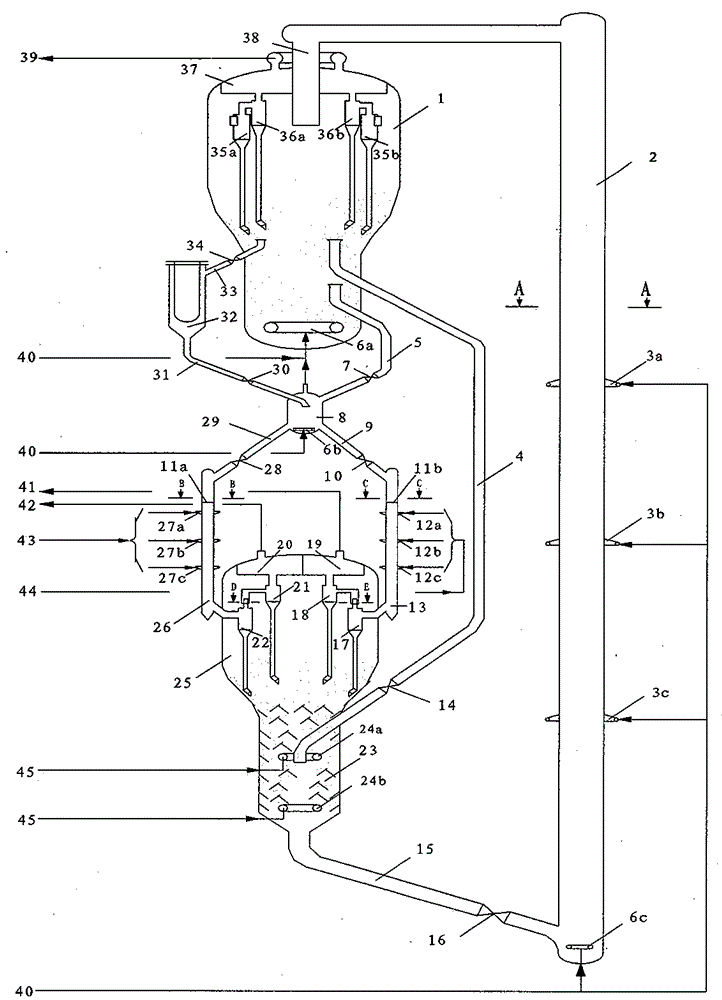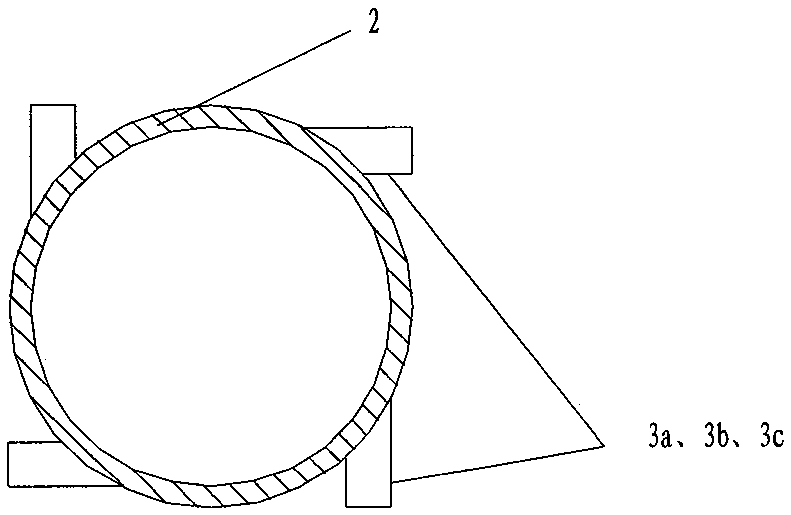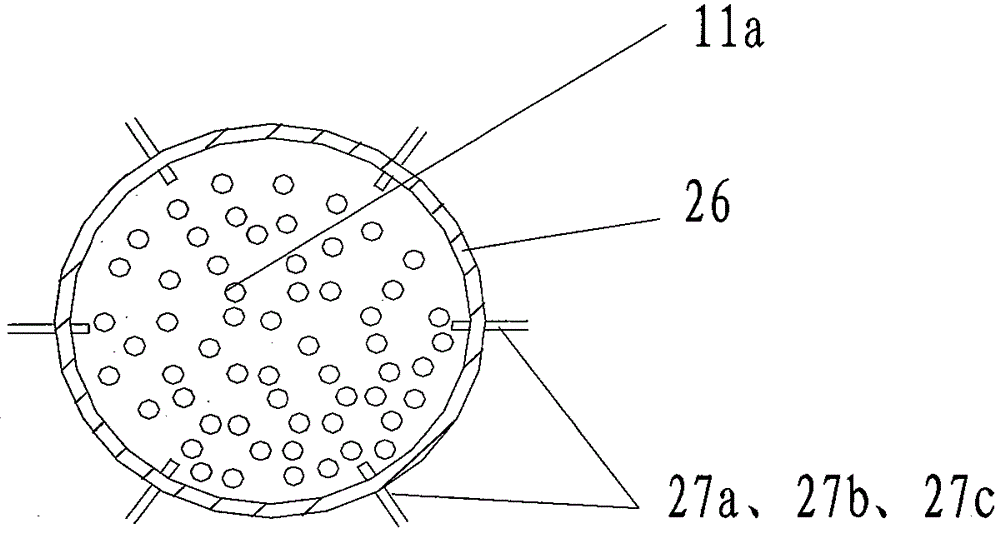A descending catalytic cracking unit
A catalytic cracking unit and catalyst technology, applied in the field of catalytic cracking, can solve the problems of deteriorated product distribution, hydrothermal deactivation of catalysts, and low stripping efficiency in the stripping section, so as to improve the coking intensity and coking efficiency, reduce dry Gas and coke yields, the effect of promoting catalytic cracking reactions
- Summary
- Abstract
- Description
- Claims
- Application Information
AI Technical Summary
Problems solved by technology
Method used
Image
Examples
Embodiment 1
[0120] Embodiment 1, comparative example
[0121] Experiments were carried out on a conventional double-riser catalytic cracking pilot plant. The heavy oil riser reactor processes Daqing atmospheric residue, and the light hydrocarbon riser reactor processes the catalytic gasoline produced by the heavy oil riser reactor. The commercially available CC-20D catalytic cracking industrial equilibrium catalyst is used as the catalyst.
[0122] The design capacity of the heavy oil riser reactor is 60kg / d, simulating the full back refining operation, the heavy oil raw material is mixed with the recycle oil and enters the heavy oil riser reactor through the feed nozzle; the design capacity of the light hydrocarbon riser reactor is 24kg / d . The carbon content of the regenerated catalyst is 0.03w%, and the microreaction activity is 62. The stripping medium in the stripping section is steam, and the stripping temperature is 500°C.
[0123] The properties of the catalytic cracking feedst...
Embodiment 2
[0125] in the approximate figure 1 The test is carried out on the new fluid catalytic cracking pilot plant of the device shown. Both the heavy oil downcomer reactor and the light hydrocarbon downcomer reactor of the new fluid catalytic cracking pilot plant can be flexibly replaced according to process requirements. The heavy oil down tube reactor processes the same Daqing atmospheric residue as the comparative example, and the light hydrocarbon down tube reactor processes the catalytic gasoline produced by the heavy oil down tube reactor. The catalyst is commercially available CC-20D catalytic cracking industrial balance same catalyst.
[0126] The design capacity of the heavy oil down tube reactor is 60kg / d, simulating the full back refining operation, the heavy oil raw material is mixed with the recycle oil and enters the heavy oil down tube reactor through the feed nozzle; the designed capacity of the light hydrocarbon down tube reactor is 30 kg / d , the carbon content of ...
Embodiment 3
[0129] According to Example 2, the main difference lies in the regeneration temperature, scorch intensity and scorch time of the turbulent bed regenerator and the riser regenerator, the average gas linear velocity of the riser regenerator, the temperature of the mixed regeneration catalyst, and the reaction of the heavy oil downcomer The fuel oil ratio of the reactor and the light hydrocarbon downcomer reactor, and the recycle ratio of the heavy oil downcomer reactor. See Table 6 for the main operating conditions and product distribution of the new FCC unit implemented in this implementation. The main properties of the liquid products of the new fluid catalytic cracking unit are shown in Table 7.
PUM
| Property | Measurement | Unit |
|---|---|---|
| length | aaaaa | aaaaa |
| length | aaaaa | aaaaa |
| length | aaaaa | aaaaa |
Abstract
Description
Claims
Application Information
 Login to View More
Login to View More - R&D
- Intellectual Property
- Life Sciences
- Materials
- Tech Scout
- Unparalleled Data Quality
- Higher Quality Content
- 60% Fewer Hallucinations
Browse by: Latest US Patents, China's latest patents, Technical Efficacy Thesaurus, Application Domain, Technology Topic, Popular Technical Reports.
© 2025 PatSnap. All rights reserved.Legal|Privacy policy|Modern Slavery Act Transparency Statement|Sitemap|About US| Contact US: help@patsnap.com



